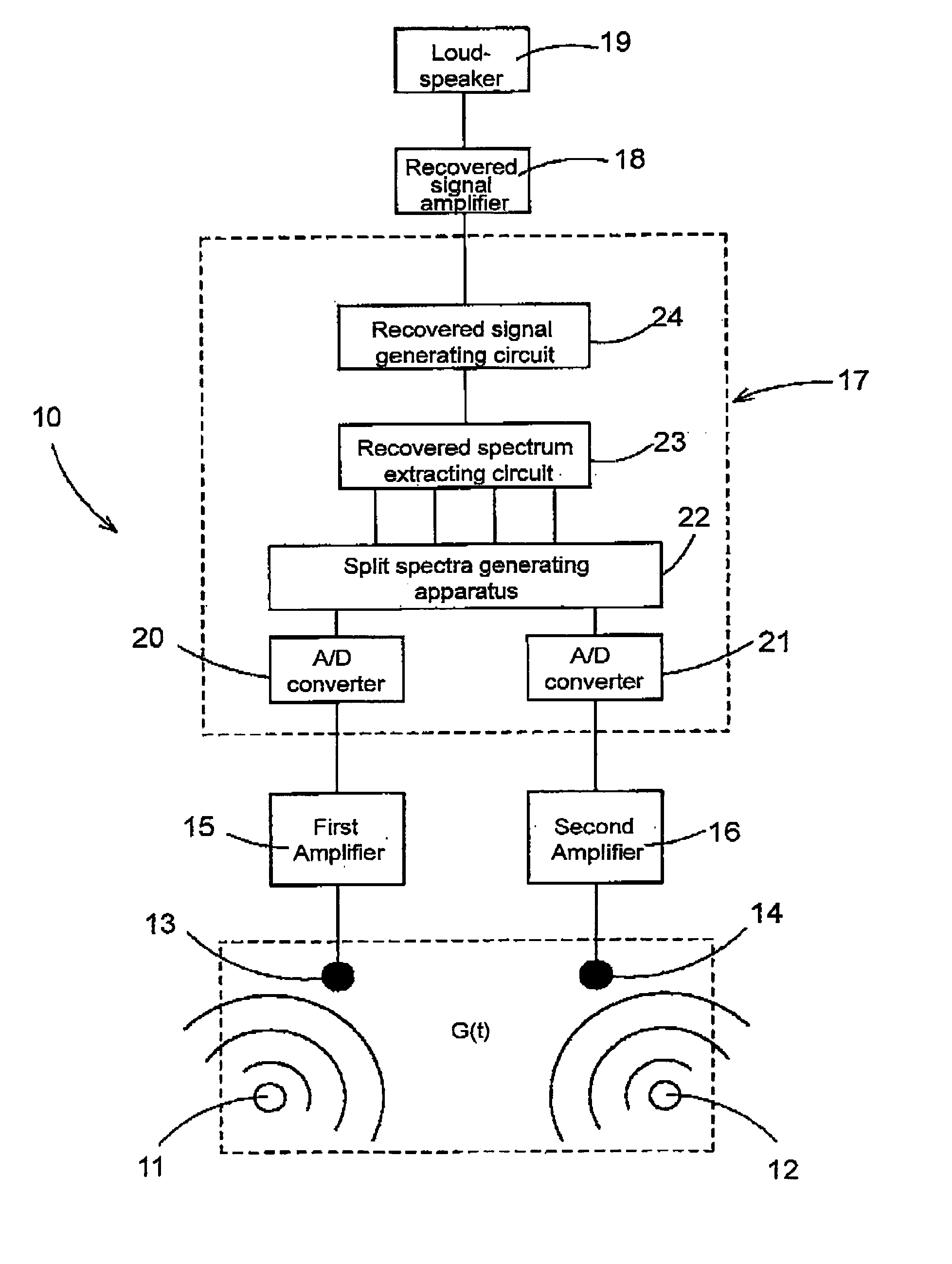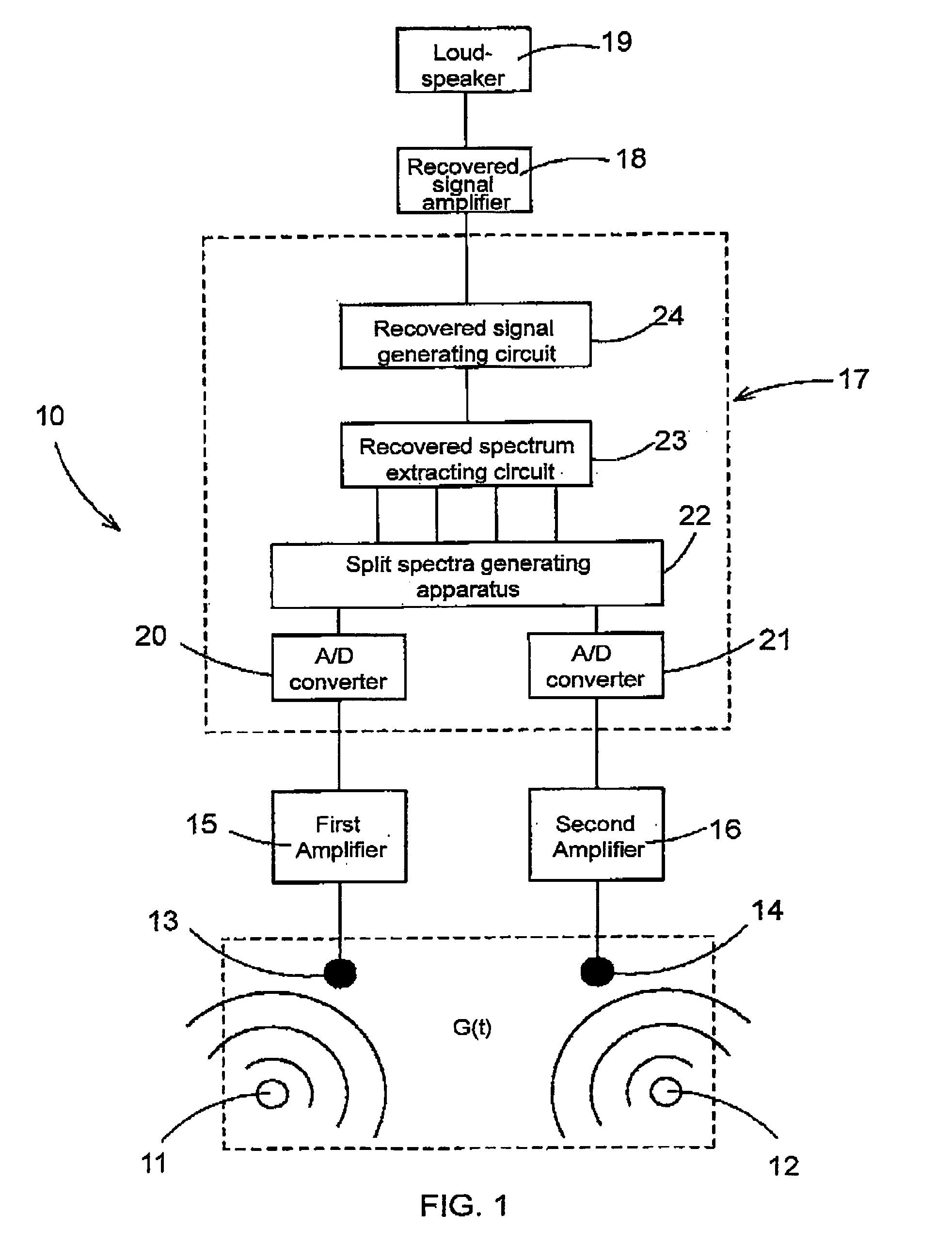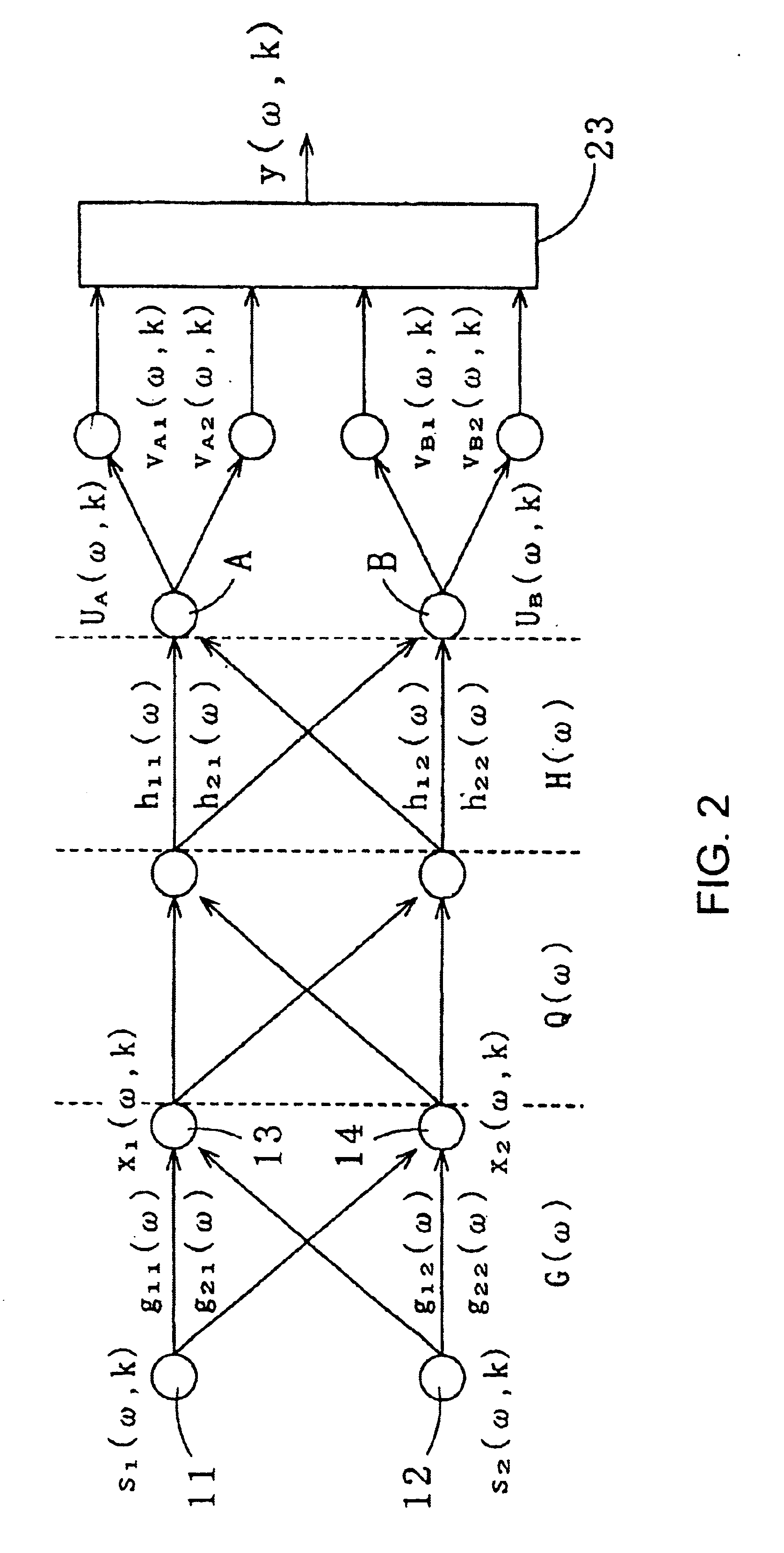Recovering method of target speech based on split spectra using sound sources' locational information
a target speech and location information technology, applied in the field of target speech recovery based on split spectra, can solve the problems of difficult to achieve a desirable recognition rate in a household environment or office, amplitude ambiguity, and difficult to separate the target speech from the noise in the time domain, and achieve the effect of high clarity and little ambiguity
- Summary
- Abstract
- Description
- Claims
- Application Information
AI Technical Summary
Benefits of technology
Problems solved by technology
Method used
Image
Examples
example 1
1. Example 1
[0198]An experiment for recovering the target speech was conducted in a room with 7.3 m length, 6.5 m width, 2.9 m height, about 500 msec reverberation time and 48.0 dB background noise level.
[0199]As shown in FIG. 9, the first microphone 13 and the second microphone 14 are placed 10 cm distance apart. The target speech source 11 is placed at a location r1 cm from the first microphone 13 in a direction 10° outward from a line L, which originates from the first microphone 13 and which is normal to a line connecting the first and second microphones 13 and 14. Also the noise source 12 is placed at a location r2 cm from the second microphone 14 in a direction 10° outward from a line M, which originates from the second microphone 14 and which is normal to a line connecting the first and second microphones 13 and 14. Microphones used here are unidirectional capacitor microphones (OLYMPUS ME12) and have a frequency range of 200–5000 Hz.
[0200]First, a case wherein the noise is s...
example 2
2. Example 2
[0205]Data collection was made in the same condition as in Example 1, and the target speech was recovered using the criteria in Equation (26) as well as Equations (27) and (28) for frequencies to which Equation (26) is not applicable.
[0206]The results were shown in Table 2. The average resolution rate was 99.08%: the permutation was resolved extremely well.
[0207]FIG. 10 shows the experimental results obtained by applying the above criteria for a case in which a male speaker as a target speech source and a female speaker as a noise source spoke “Sangyo-gijutsu-kenkyuka” and “Shin-iizuka”, respectively. FIGS. 10A and 10B show the mixed signals observed at the first and second microphones 13 and 14, respectively. FIGS. 10C and 10D show the signal wave forms of the male speaker's speech “Sangyo-gijutsu-kenkyuka” and the female speaker's speech “Shin-iizuka” respectively, which were obtained from the recovered spectra according to the present method with the criteria in Equat...
example 3
3. Example 3
[0210]In FIG. 9, a loudspeaker emitting “train station noises” was placed at the noise source 12, and each of 8 speakers (4 males and 4 females) spoke each of 4 words: “Tokyo”, “Shin-iizuka”, “Kinki-daigaku” and “Sangyo-gijutsu-kenkyuka” at the target speech source 11 with r1=10 cm. This experiment was conducted with the noise source 12 at r2=30 cm and r2=60 cm to obtain 64 sets of data. The average noise levels during this experiment were 99.5 dB, 82.1 dB and 76.3 dB at locations 1 cm, 30 cm and 60 cm from the loudspeaker respectively. The data length varied from the shortest of about 2.3 sec to the longest of about 6.9 sec.
[0211]FIG. 11 shows the results for r1=10 cm and r2=30 cm, when a male speaker (target speech source) spoke “Sangyo-gijutsu-kenkyuka” and the loudspeaker emitted the “train station noises”. FIGS. 11A and 11B show the mixed signals received at the first and second microphones 13 and 14, respectively. FIGS. 11C and 11D show the signal wave forms of the...
PUM
| Property | Measurement | Unit |
|---|---|---|
| Distance | aaaaa | aaaaa |
| Distance | aaaaa | aaaaa |
| Distance | aaaaa | aaaaa |
Abstract
Description
Claims
Application Information
 Login to View More
Login to View More - R&D
- Intellectual Property
- Life Sciences
- Materials
- Tech Scout
- Unparalleled Data Quality
- Higher Quality Content
- 60% Fewer Hallucinations
Browse by: Latest US Patents, China's latest patents, Technical Efficacy Thesaurus, Application Domain, Technology Topic, Popular Technical Reports.
© 2025 PatSnap. All rights reserved.Legal|Privacy policy|Modern Slavery Act Transparency Statement|Sitemap|About US| Contact US: help@patsnap.com



